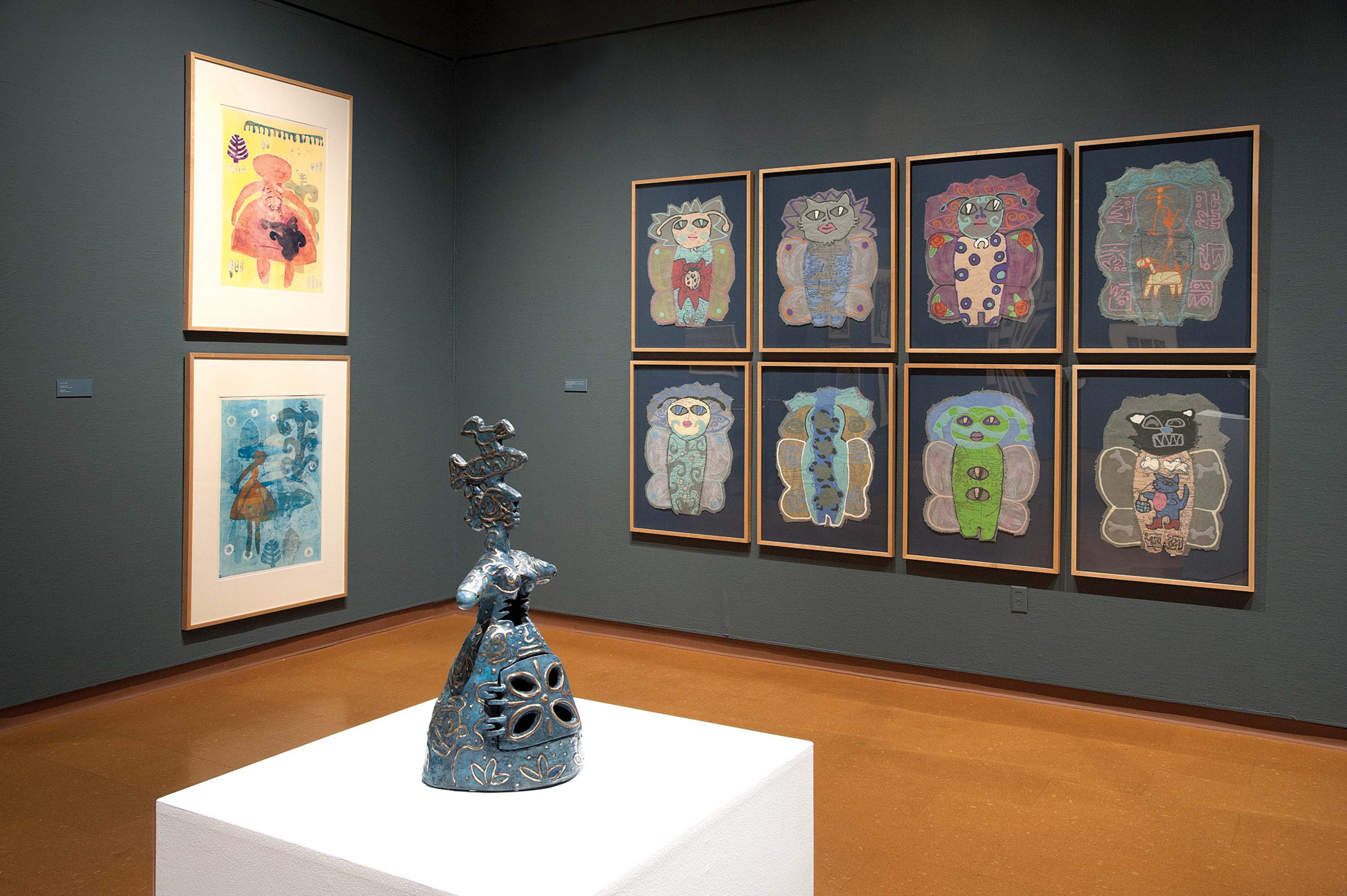
09 Jun Printing the Legend Around the World
BY THEM TIME I FINALLY CATCH UP with Melanie Yazzie — using a cellphone, of course — she’s walking through Denver International Airport on her way to baggage claim.
“I think Melanie has traveled as much as anybody that I know or I can think about,” says Glenn Green who, with wife Sandy and daughter Kerry, runs Glenn Green Galleries outside of Santa Fe and has represented Yazzie’s art for 20 years. “I always kid her: ‘And where are you calling from?’”
Yazzie, 47, has just returned from giving a lecture at the University of New Mexico Art Museum, where her solo exhibition, Melanie Yazzie: Geographies of Memory, (which ran February 9 to May 17) launched museum Director Lisa Tamiris Becker’s biennial exhibition series devoted to emerging or established indigenous artists. Geographies, of course, perfectly describes Yazzie’s art. “I’ve been very, very fortunate to travel to practically all 50 states and to many, many different countries in the world,” she says.
Of Diné (Navajo) heritage, she grew up on the Navajo Nation in northeastern Arizona, but fell in love with printmaking in high school at Westtown School, a Quaker boarding school in West Chester, Pennsylvania. She has taught at the Institute of American Indian Arts, the College of Santa Fe (now the Santa Fe University of Art and Design) and the University of Arizona, and is a professor of art and Head of Printmaking at the University of Colorado in Boulder. And she has studied, shown or taught in France, Germany, Italy, Mexico, Brazil, Siberia, Australia, New Zealand, Japan …
Yet geographies — and Yazzie’s works — aren’t just places on a map.
“I was interested in all the different evocations of geography,” Becker says of the exhibition. “That would be the more literal geography that you would think of in terms of maps, but also geographies of the mind, geographies of the body.
And with these floating forms in these magnificently layered spaces, evocations of mind or memory of mythic space are really pronounced.”
Or maybe geographies pertain to printmaking’s various forms. Yazzie produces linocuts, monotypes, wood-blocks, lithographs, etchings, paper-pulp prints with photolithographic elements — not to mention gouache drawings, paintings, steel sculptures and bronze sculptures. She has even done ceramic hand-building in porcelain.
“She’s a really consistent, mature printmaker, but there’s also an experimental edge to what she does,” says Stephen Glueckert, curator at the Missoula Art Museum in Montana, where the exhibition Blessing Way: Prints by Melanie Yazzie runs June 6 to September 7. “She has really great decision making and a real clear vision.”
“Her approach is totally her own,” Kerry Green says of Yazzie. “And the more I sit at something and look at something, the more I see visually, and when I talk to her, more emerges. It’s like layering in printmaking. There’s a layering in her philosophy, her story and what the pieces mean to her.”
What does printmaking mean to Yazzie? Democracy.
“I can work in multiples so I can reach a lot of people,” she says. “That’s something that can happen only in print-making that I find wonderful. It was one of the art forms that went out to the masses so everybody could have art. That part of printmaking history is really important to me.”
Although she says her prints and her sculptures are about even, she’s working on prints — using nontoxic elements for the past 15 years — almost every day.
“It’s my personal life,” she says. “I think other people may have children and hobbies. My hobby and my children is my art-making. Any spare moment I have I’m working on different projects.”
Her muse is old television shows — “Little House on the Prairie,” “Gunsmoke,” “The Big Valley.” “It takes me back to that happy time of my childhood.” And music — Tracy Chapman, Ben Harper and, most importantly, Big Head Todd and the Monsters. “If I really need to finish a large piece, I put on the Riviera album. It takes me to another place and I can get anything done.”
Yazzie’s work continues to evolve. “Change is constant with Melanie,” Glenn Green says.
“You find corn, images of weaving, tools, animals —sthe love of animals — and plants,” Becker says. “But yet it’s not the kind of Native [American] imagery you see repeated in many other works. It’s very personal and unusual. She doesn’t remain fixed on one understanding on what it means to be Native and, in a bigger context, Western.”
What is consistent in her works, both sculptures and prints, is humor used to communicate deeper issues … and animals.
“I completely love [animals],” she says. “Especially my chow chows. They’re just amazing.”
She grew up with a St. Bernard, a Doberman, a rat, a hamster, fish. These days, Yazzie and her husband, Clark Barker, have two chows and two cats.
“Somehow it’s strange, but I really connect with the animals we own,” she says. “And we have these unseen conversations and communication that I can’t really explain, but I can feel the love that we have for each other.”
Yet she also draws upon her travels, illustrating other, often indigenous, cultures in her art. “When I do my lectures, I include a lot of images from all the places I’ve been to,” Yazzie says. “Sometimes I’ve been told it’s for ‘armchair travelers.’ They just sit there, and maybe they won’t go to Japan or Siberia or New Zealand, but they see that land or place through my eyes. People leave with an understanding of these places.”
Which is something Yazzie wants people to take away with them when they look at her art.
“I want people to take away a sense of calmness and happiness,” she says. “Especially being a Native American artist, there are a lot of stereotypes that people have of what we make. One of the things I love is when they say, ‘It doesn’t look like a Native American work.’”
Of all her travels, her most powerful connection has been with the Maori people of New Zealand.
“It’s like a family connection and a spiritual connection,” she says. “I went there for the first time in 1995. I came back, and I was homesick for that place. When I went there, I literally felt like I left a part of me there.”
She’s hoping to return to New Zealand sometime this year. But first… there’s that exhibition in Montana. And a residency at the Anderson Ranch Arts Center in Snowmass Village, Colorado. Another trip to New Mexico. And she’s teaching summer school at the University of Colorado.
“Those frequent flyer miles do add up,” Yazzie says with a laugh.
Which brings me back to Glenn Green Galleries in Tesuque, New Mexico, where Sandy Green points to Remembering Brittany, a 48-by 36-inch acrylic on canvas that Yazzie created in 2007. The painting was inspired while Yazzie was teaching at France’s Pont-Aven School of Contemporary Art.
“The shapes above the figure look like bottles,” Sandy says. “An editor and writer came to an exhibit that had many of the shapes like that. And he said, ‘Are you thinking of alcoholism when you do that?’
“She said, ‘No, those are the shapes of the houses in Brittany.’
“And, not knowing what a world traveler she is, he said to her, ‘You really should travel more.’”
- “A Horse in Alaska” | Monotype | 40.5 x 53 inches | 2011
- “Doorway” | Monotype | 22 x 30 inches | 2014
- ”Mid Morning” | Mixed Media Monotype with Gouache | 22.75 x 15.125 inches | 2012
- “Remembering Brittany” | Acrylic on Canvas | 48 x 36 inches
- Yazzie in Australia, 2013.
- “Two Minds Meeting” | Steel with Powder Coat Finish | 23 x 29 x 13 inches
- Fred W. Begaye Gives “Tours of His Homeland” | Bronze | Edition of 15 | 11 x 11 x 16 inches






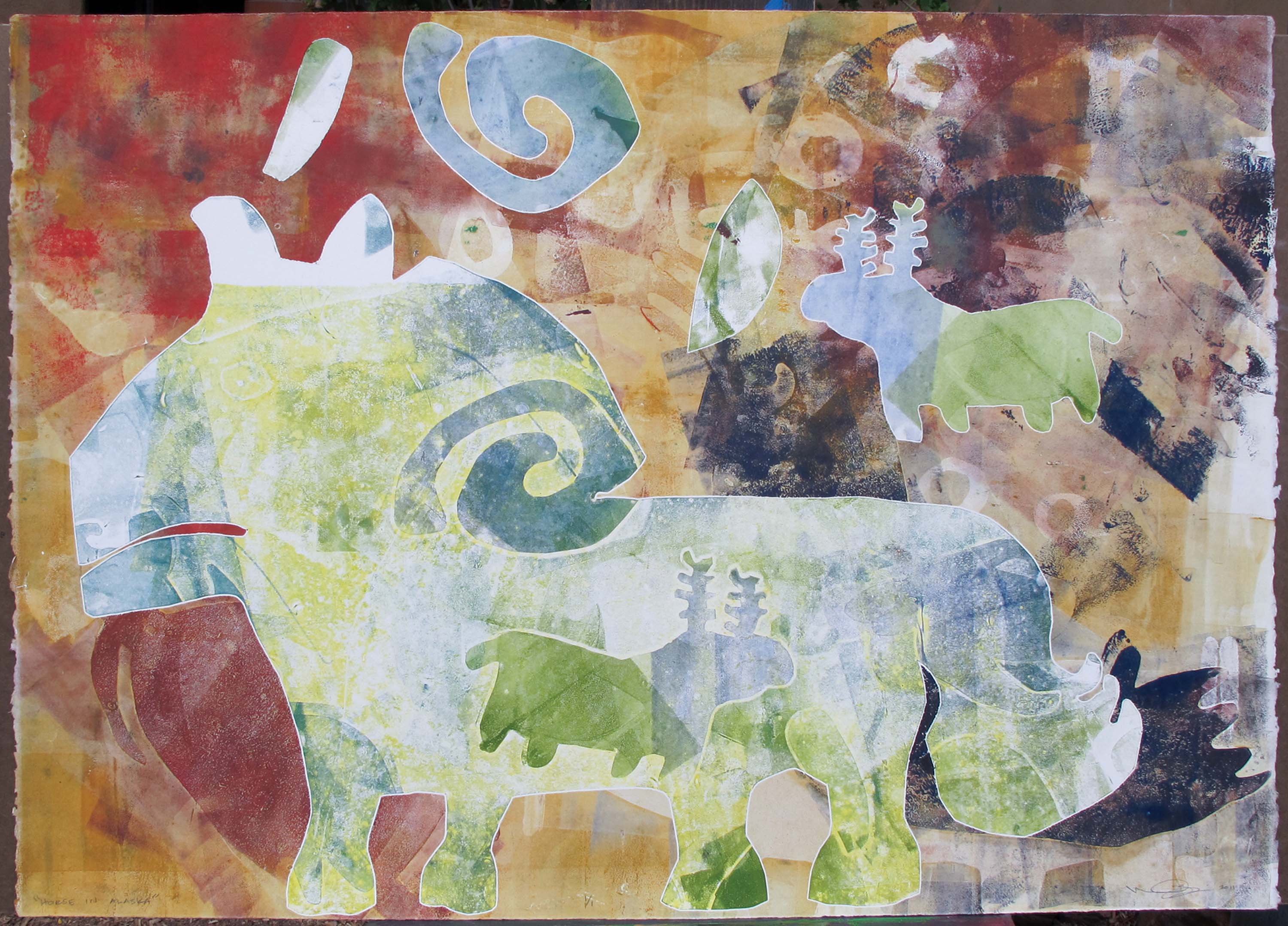
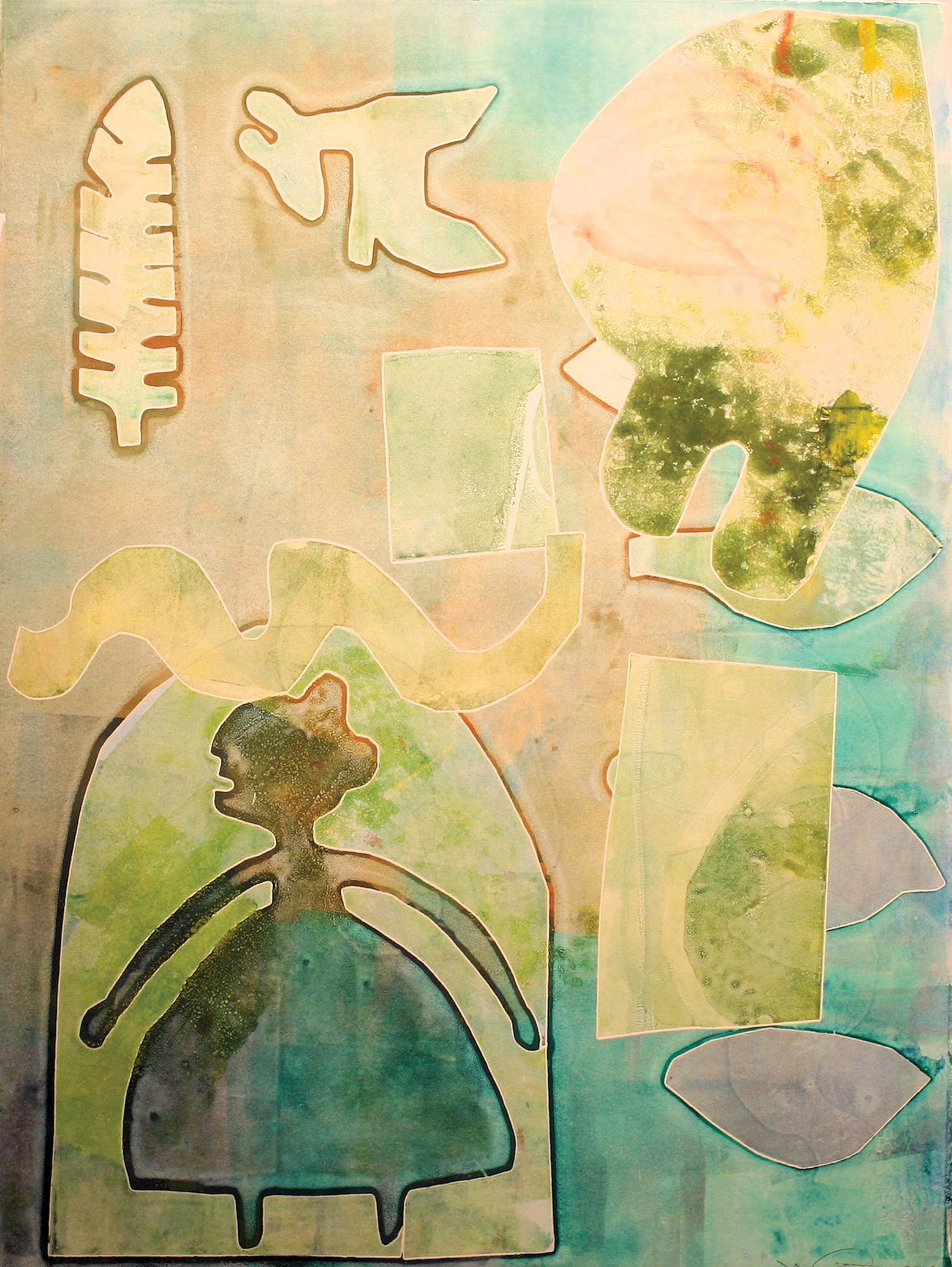
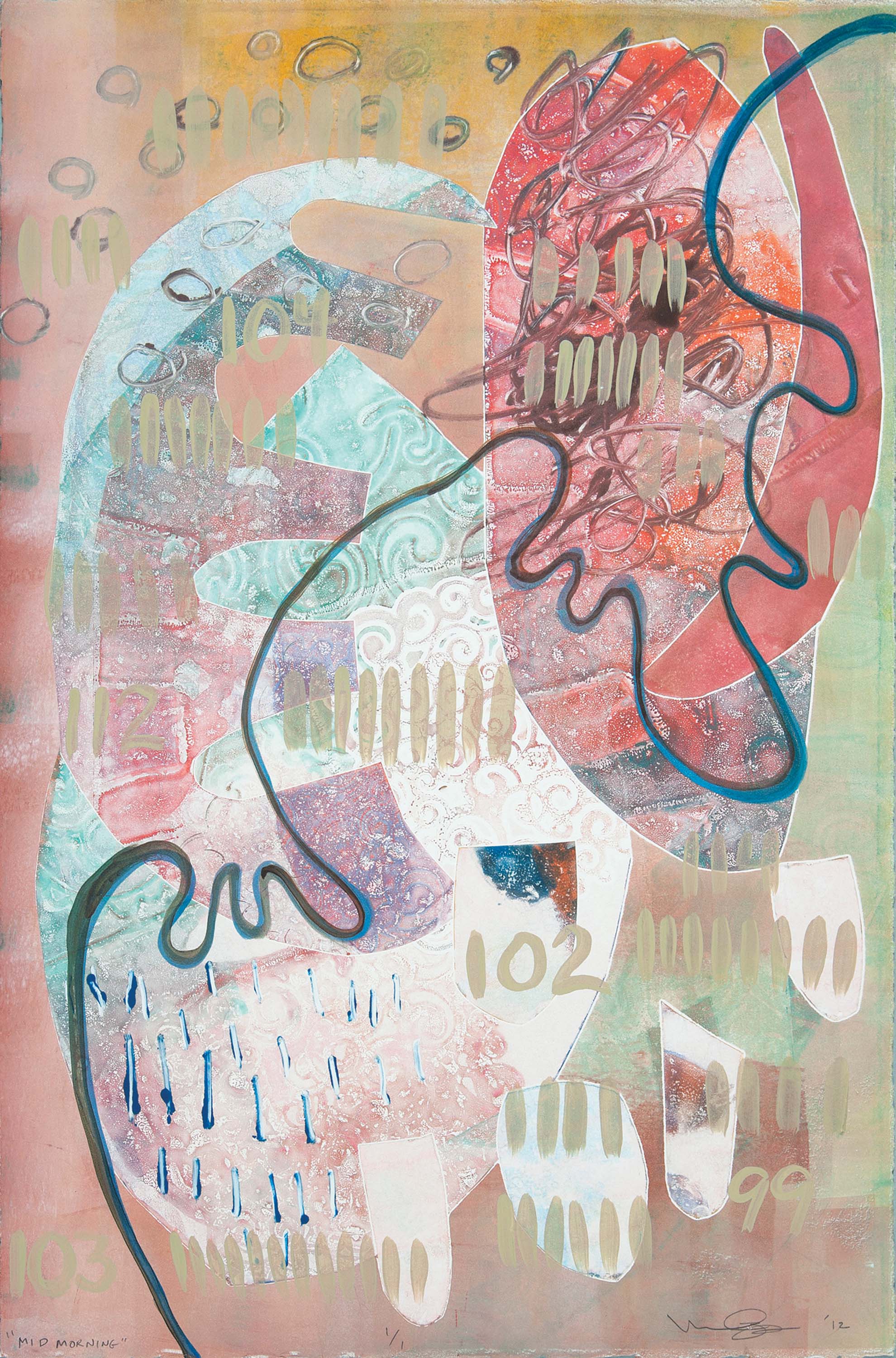
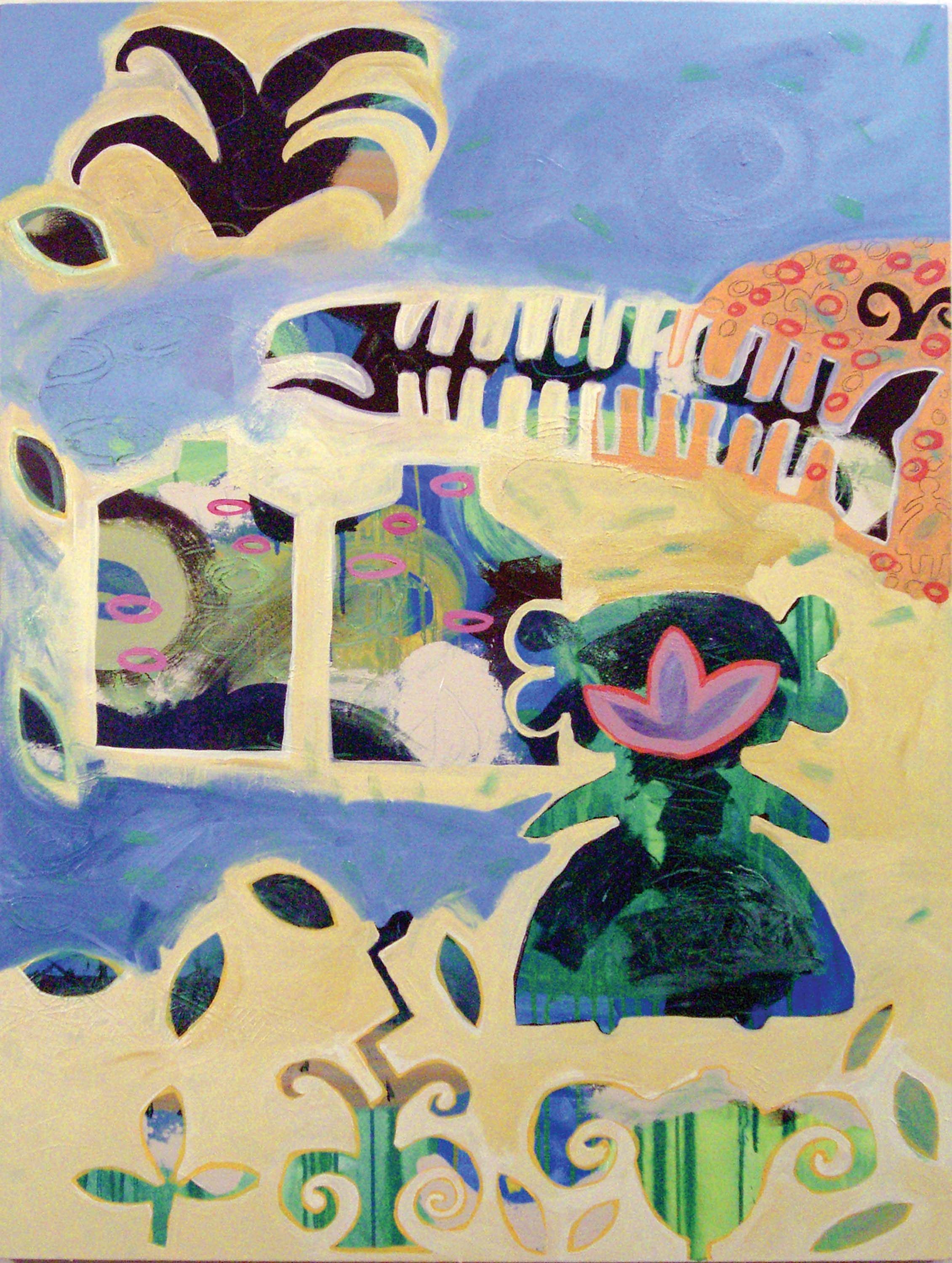
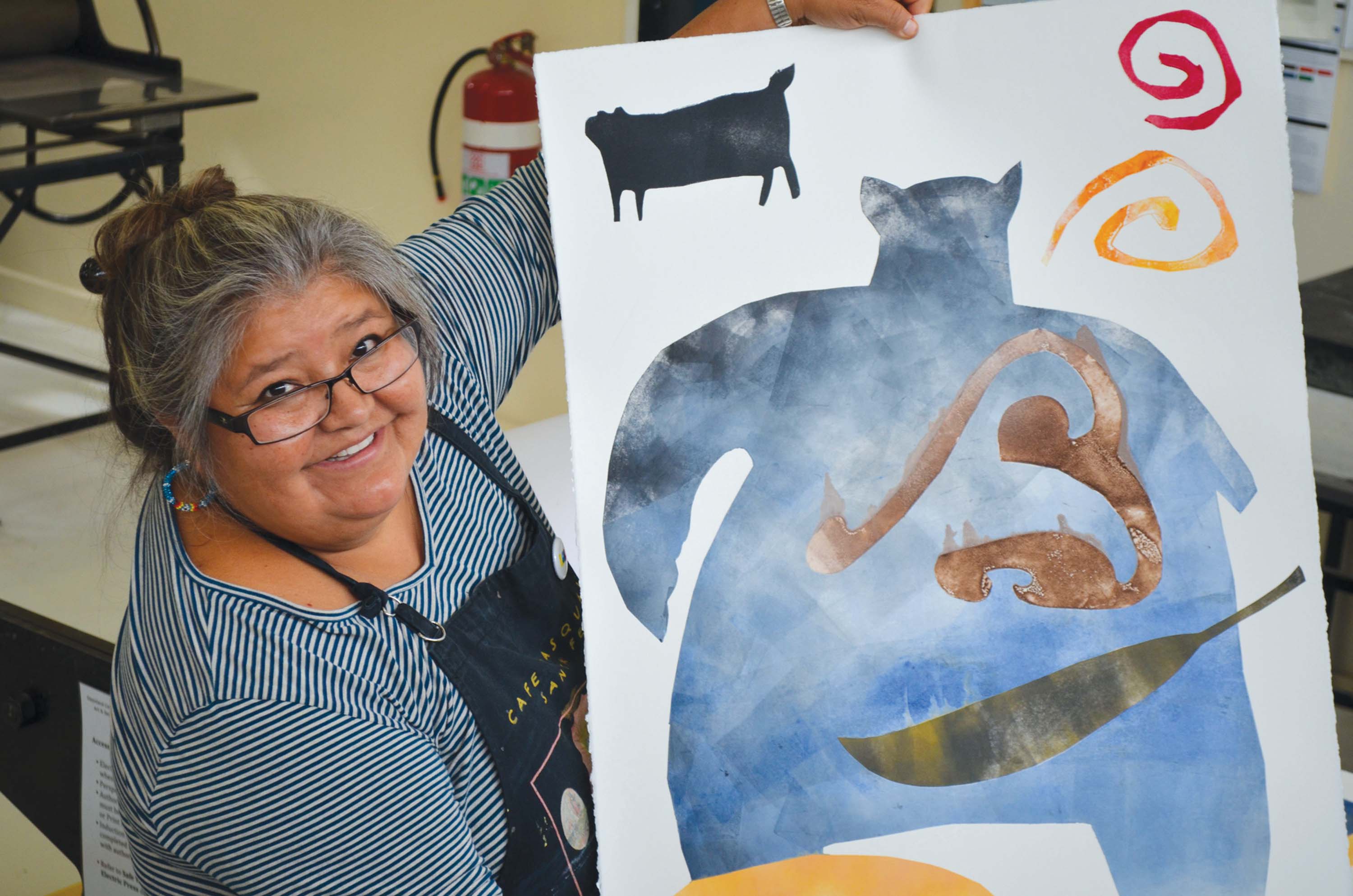
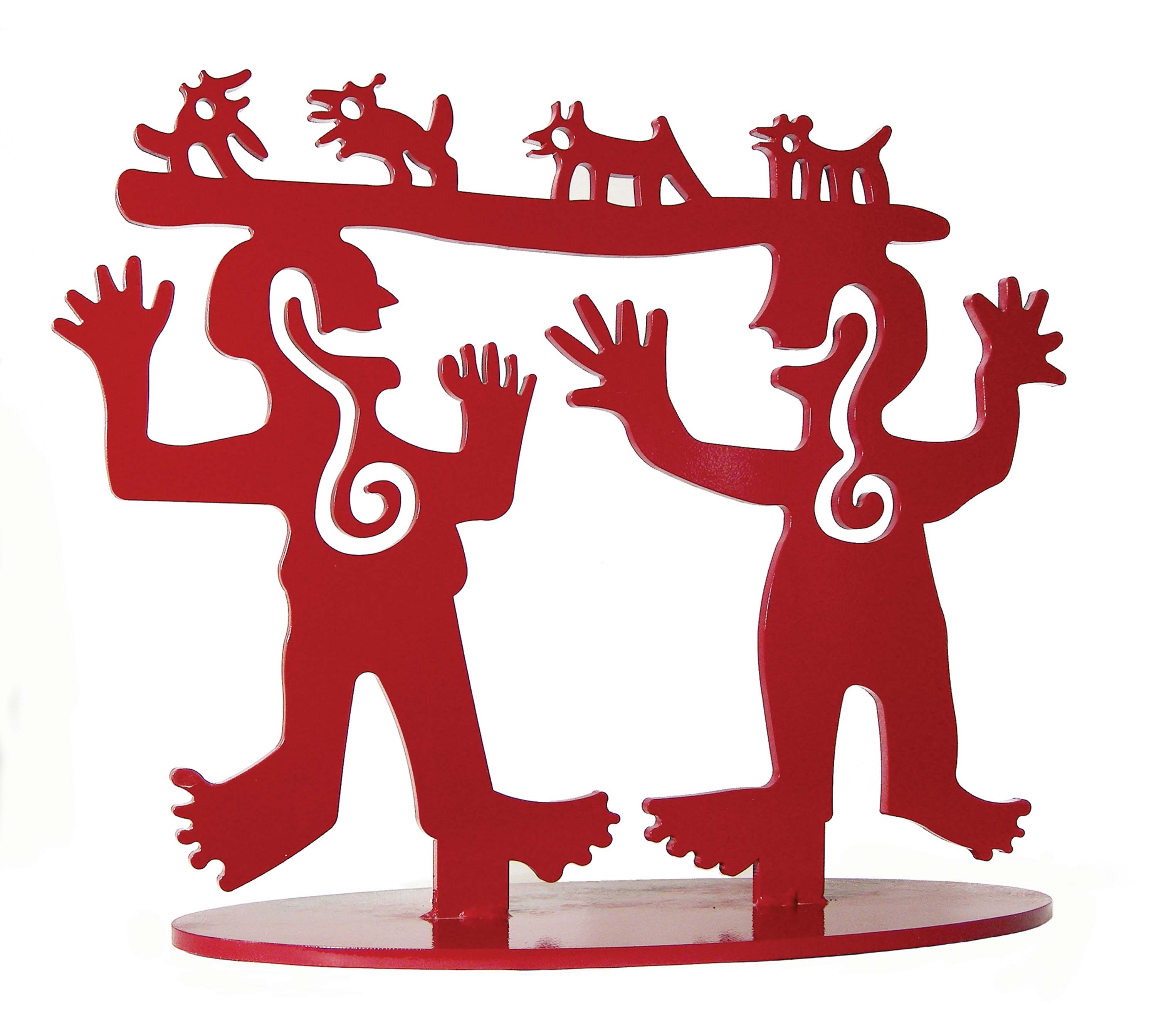
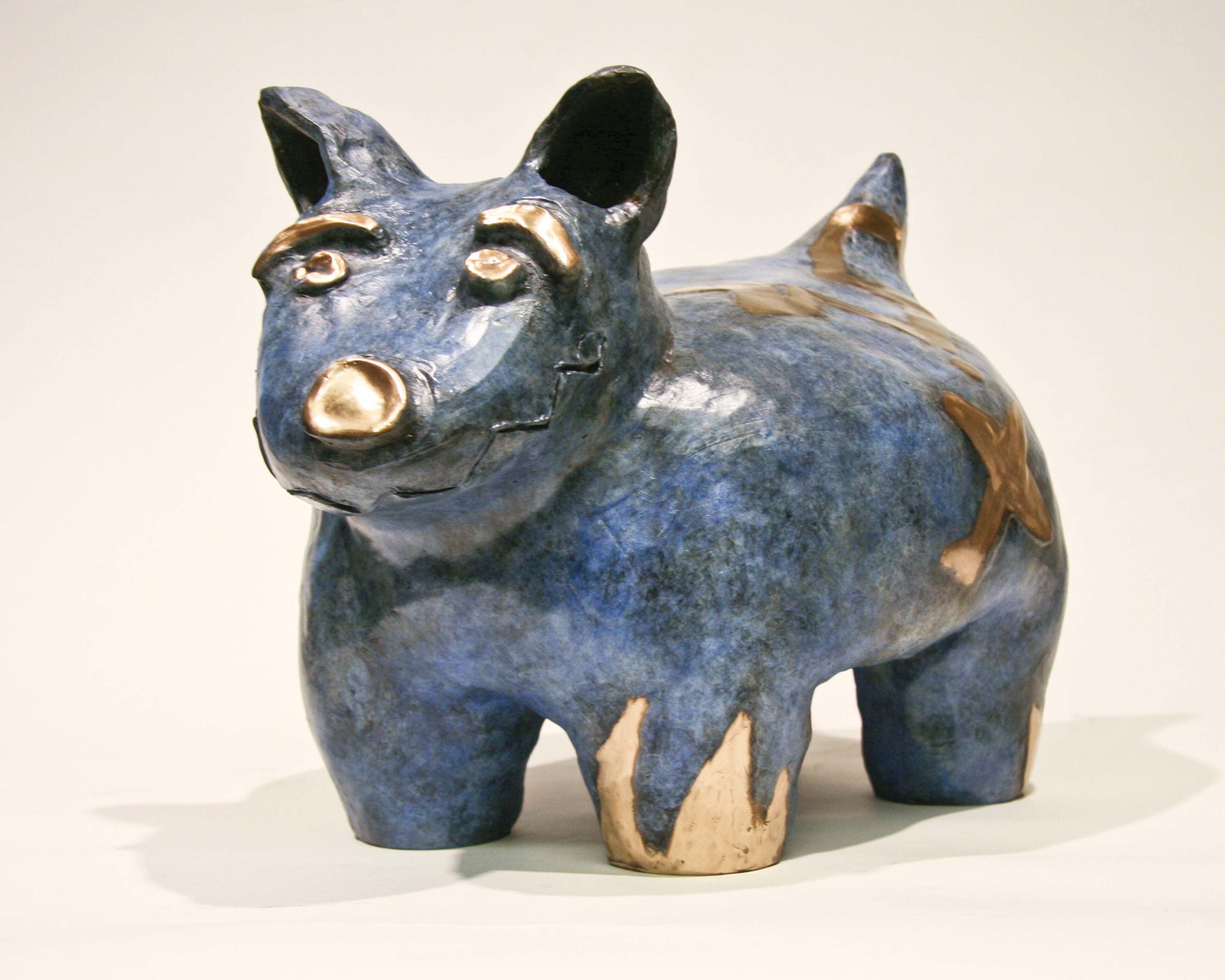
No Comments